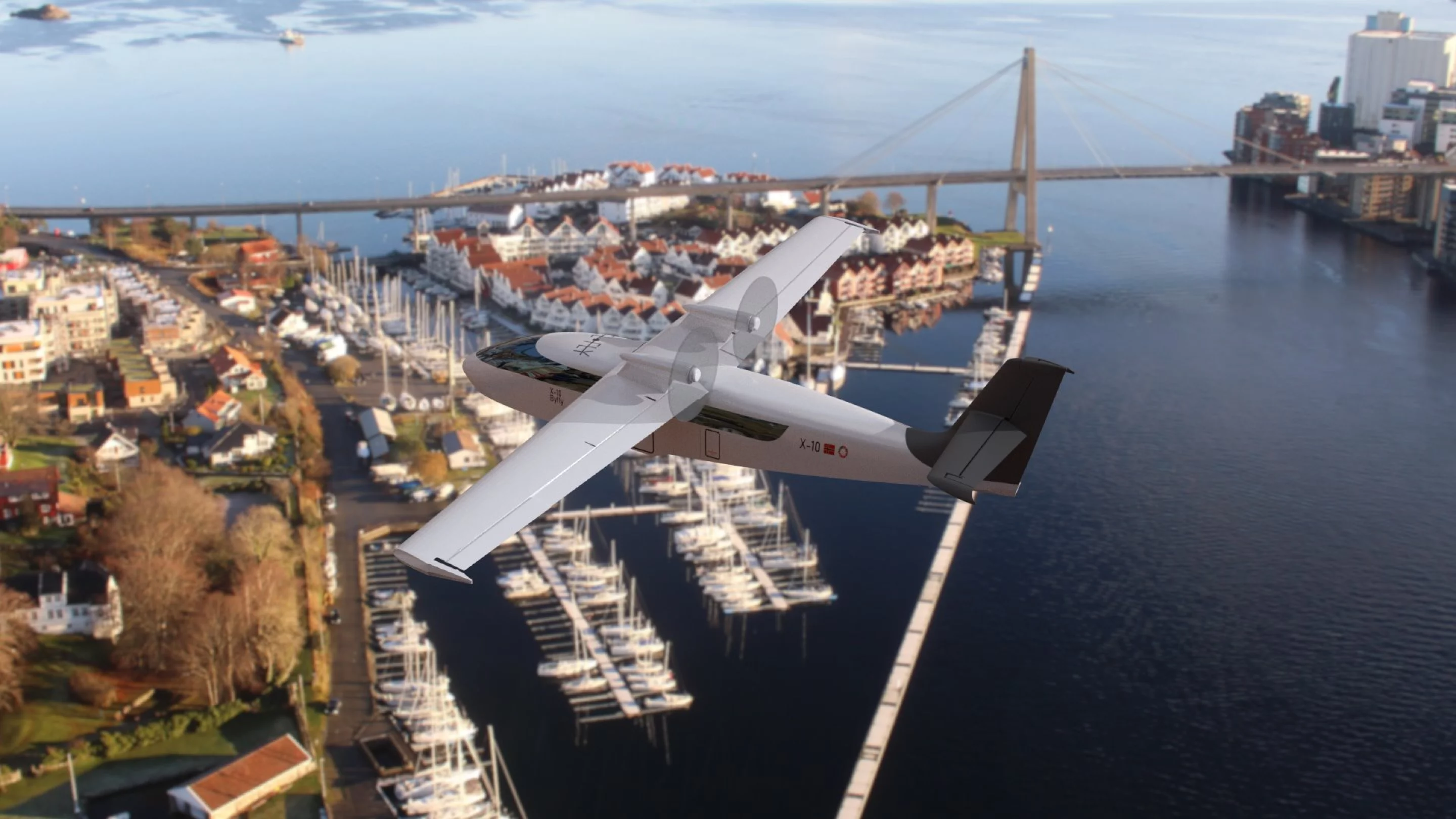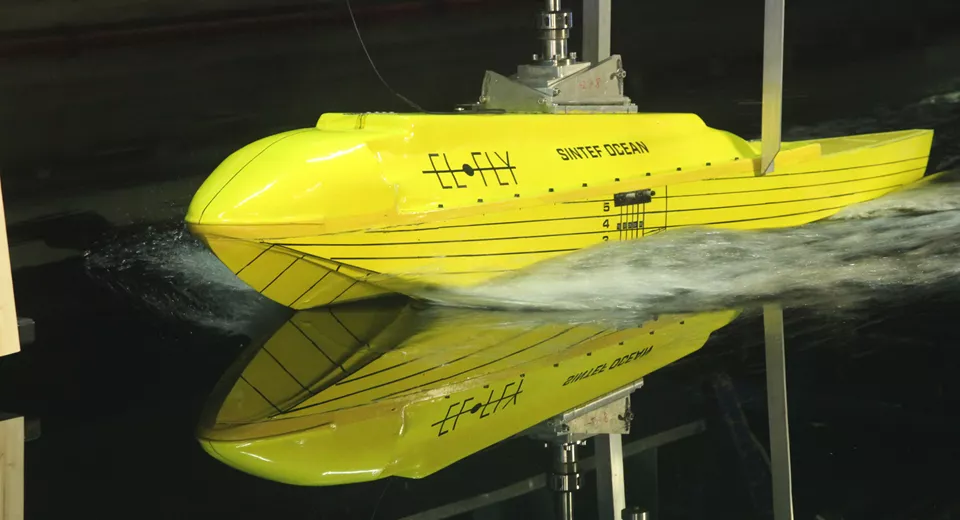Although Norway has a large coastline and many fjords, there are few flat open spaces for the construction of runways. This is the meaning of the elfly project, because it is developing a short-range electric seaplane that can take off and land in urban ports. It is understood that elfly's basic idea is that passengers will not have to travel to and from the suburban airport, but only between the sea terminals in the city center.

Since the aircraft will be equipped with relatively quiet electric motors, engine noise should not be a problem.
In fact, the byfly with nine passengers can be described as a flying ship because it will mainly rely on its ship like hull rather than a set of floating bridges to float. The hull is currently being developed at the SINTEF Institute in Norway, where the scale model is being towed over the surface of a 260 meter tank.

It should be noted that small floating bridges will be installed at both ends of the wing to stabilize the aircraft during take-off and landing. In addition, retractable wheels will enable it to use traditional runways when necessary.
Two 825 kW pushrod engines mounted on the wing will enable byfly to reach a top speed of 300 kilometers per hour. They will be powered by a lithium battery pack that can provide a range of up to 250 kilometers per charge - and that number may increase as battery technology advances. One pilot or two pilots can be allocated according to the flight distance.
The plan calls for the full-size prototype to be put into operation within three years, thanks in part to the funding of NOK 16 million provided by the Norwegian Research Council. The company hopes that 15 to 20 such aircraft will be put into commercial use by 2030.
Elfly ceoeric lithun said: "our goal is to provide flexible mobility, achieve zero emissions and greatly reduce noise pollution in Norway, while developing a new and sustainable business model."